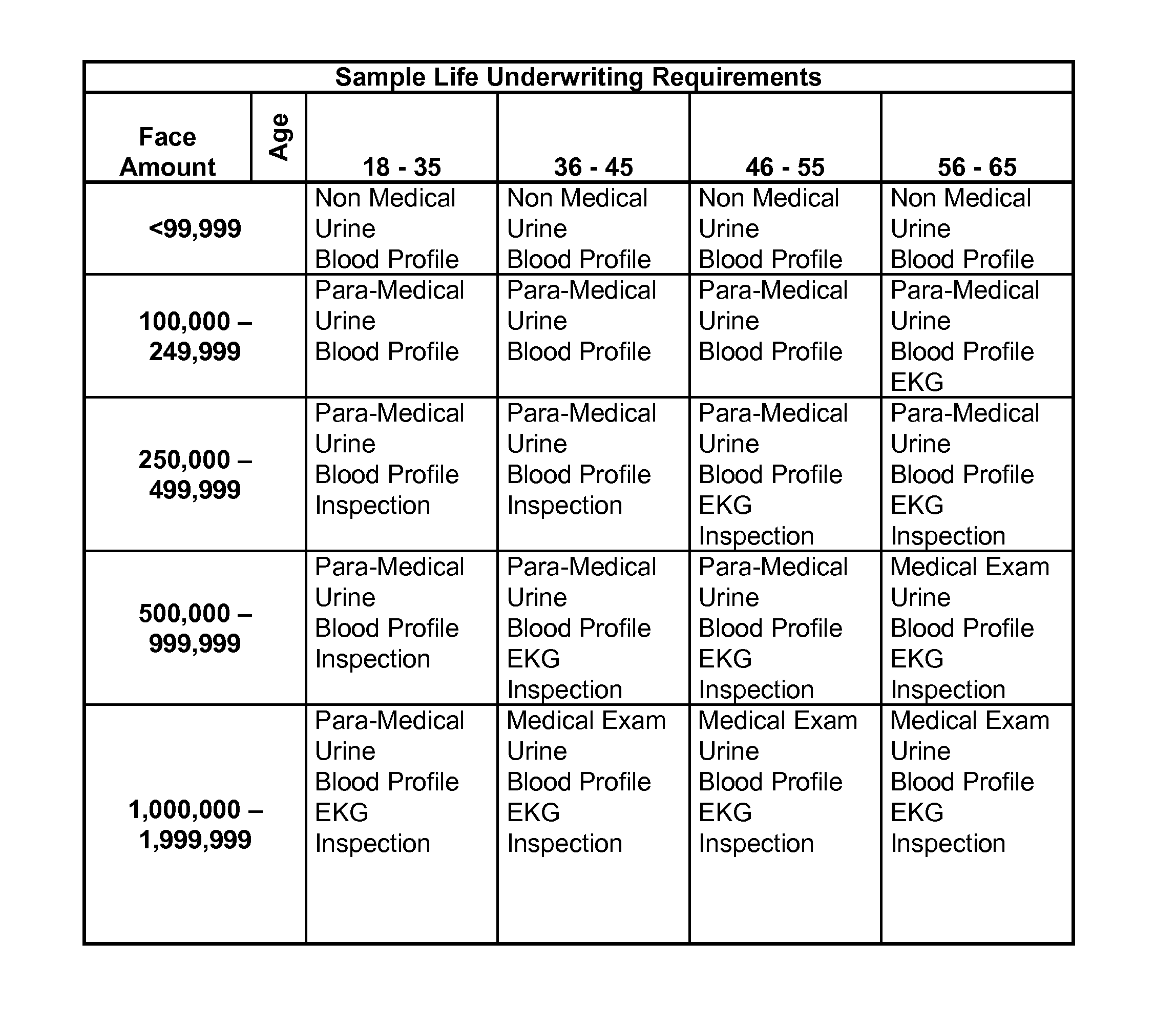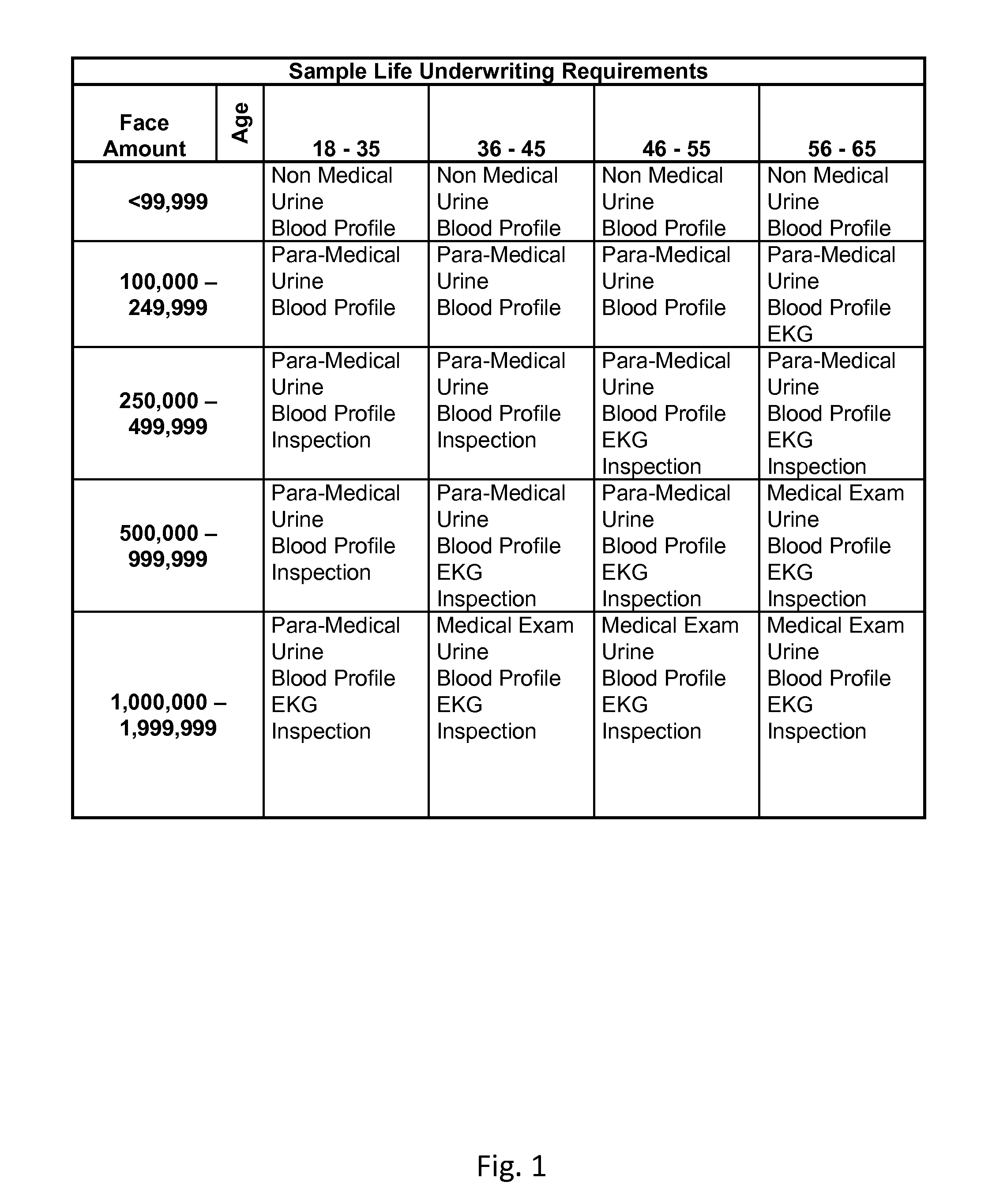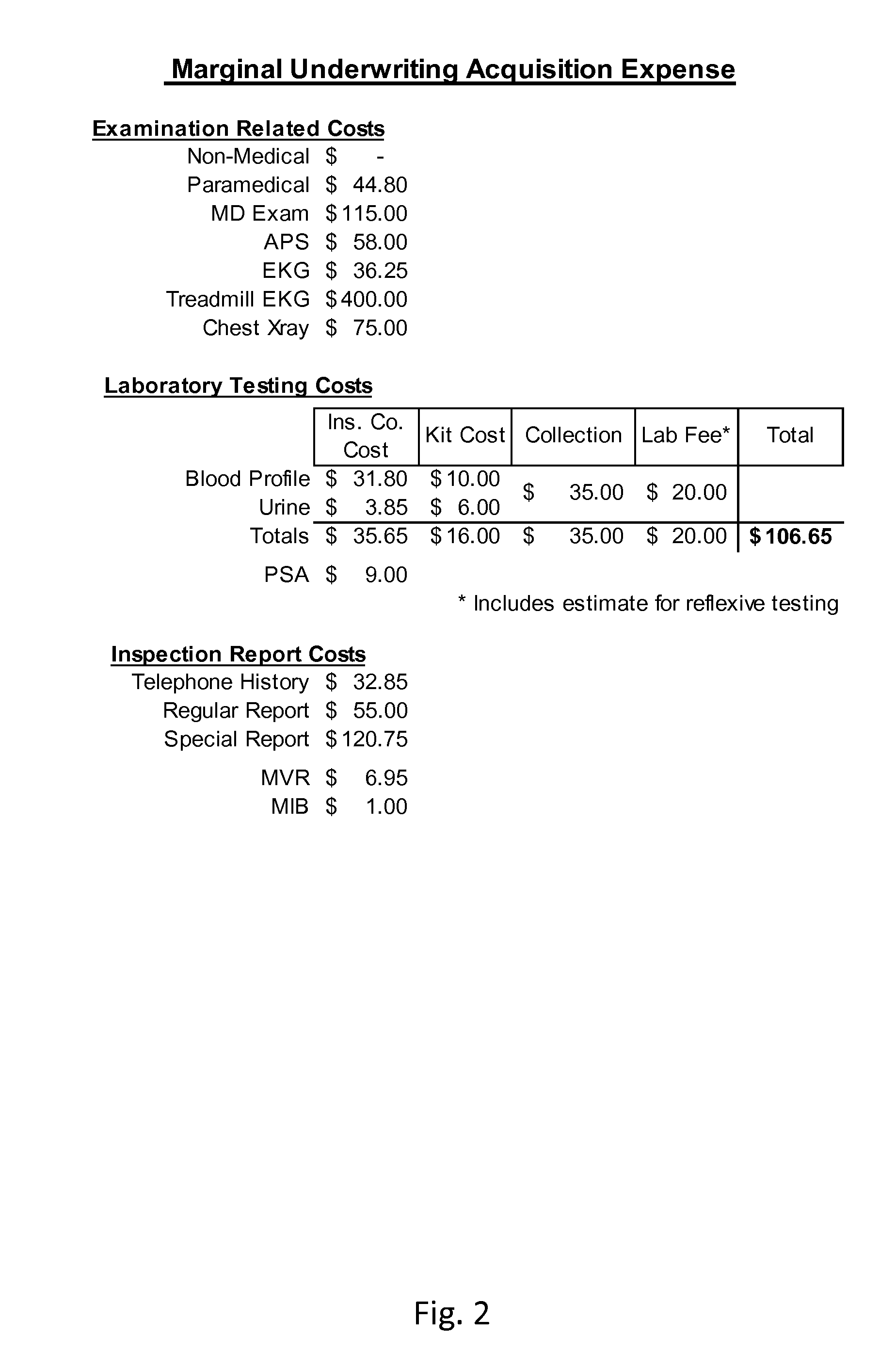Risk Assessment Company
a risk assessment and company technology, applied in the field of risk assessment companies, can solve the problems of increasing the total industry-wide cost of acquiring insurance coverage associated with the applicant, inconvenient for the applicant, and inability to know whether the applicant has insurance coverage or not, so as to improve the measure and manage, reduce the cost of policy acquisition, and the effect of quick and easy derived
- Summary
- Abstract
- Description
- Claims
- Application Information
AI Technical Summary
Benefits of technology
Problems solved by technology
Method used
Image
Examples
Embodiment Construction
[0074]Persons of ordinary skill in the art will recognize that the following disclosure is illustrative only and not in any way limiting. Other embodiments of the disclosure will readily suggest themselves to such skilled persons having the benefit of this disclosure.
[0075]One economic, or financial, basis for a Risk Assessment Company (RAC) is the elimination of expense redundancies typically found in the mechanisms of the healthcare and insurance services currently provided to individual consumers. The elimination of these expense redundancies will reduce expenses for each of the service providers and benefit consumers by providing better services at lower cost.
[0076]The expense reduction is made possible by combining the similar functions performed by each service provider. The basic elements of the similar functions would be modified (if necessary) to accommodate the specific need of each company. Each company would then piggyback its service on this common function which would ...
PUM
 Login to View More
Login to View More Abstract
Description
Claims
Application Information
 Login to View More
Login to View More - R&D
- Intellectual Property
- Life Sciences
- Materials
- Tech Scout
- Unparalleled Data Quality
- Higher Quality Content
- 60% Fewer Hallucinations
Browse by: Latest US Patents, China's latest patents, Technical Efficacy Thesaurus, Application Domain, Technology Topic, Popular Technical Reports.
© 2025 PatSnap. All rights reserved.Legal|Privacy policy|Modern Slavery Act Transparency Statement|Sitemap|About US| Contact US: help@patsnap.com



